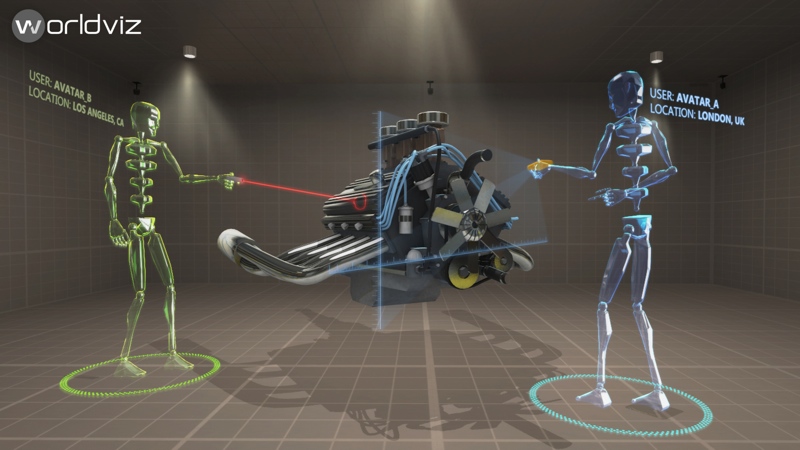Enterprise VR company WorldViz was at Autodesk University 2016 to demo their forthcoming communication platform for businesses, codenamed “Skofield.”
After putting on a headset and picking up a handheld remote, I found myself in a virtual room with an array of computers resting on a tabletop. Using the remote, I picked up and examined the lifelike hardware, even moving my head closer to get a better look. I wasn’t there alone, either. I was accompanied by the avatar of WorldViz CEO and co-founder, Andrew Beall. With a click of his remote we were in an airplane hanger, then a server room where racks flew by me like a scene from The Matrix.
If it sounds a little bit like cycling through presentation slides, that’s the idea. Alongside the VR experience portion, Skofield also includes a presentation designer that’s as easy to use as PowerPoint or GoToMeeting. Users can drag and drop elements in a 3D space to create presentation slides. They can also edit the presentation to include proximity triggers–so the objects do something when a user approaches–or interactive elements.
When teams are dispersed across the globe, this brings a feeling of real presence to virtual collaboration. Any team member that puts on a headset can feel present in the same space, and look at the same visual content as everyone else. (If you’re skeptical, I can verify that it works—I kept trying to make eye contact with Beall’s avatar during the presentation.) WorldViz says that this social function baked into VR can save millions of dollars for companies that work on complex products, as in aerospace, automotive, construction, architecture, and so on.
“Accurately conveying visual ideas to remote decision makers is still a huge challenge for companies,” said Beall. “We see it all the time – modern communication technologies such as telephony, video conference calls, and PowerPoint sharing simply can’t bring people together in a collaborative setting or enable decision makers to experience complex concepts, designs, and spaces first hand. Companies are spending a staggering $1.25 trillion globally on business travel to circumvent this limitation. We believe Skofield is the answer to that challenge.”
WorldViz has worked to exploit the potential of VR technology for their software, giving attendees the ability to move around the space, zoom in on objects, annotate, measure distances, and even use a laser point.
Notably, WorldViz built the Skofield solution on their development software Vizard, which is device-agnostic and supports a number of different VR hardware configurations. That means you can use Oculus Rift, HTC Vive, and even 3D displays and even CAVE projection systems.
Skofield will be available as a cloud-based solution, but clients sharing highly sensitive information can also install it on local, proprietary servers. The company has not yet released pricing information.









